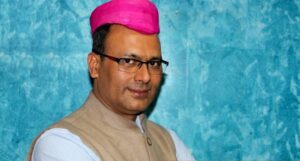An Indian musician who played the shehnai with such expressive virtuosity, a ceremonial oboelike North Indian horn, that he became a leading Indian classical music artist. It was regarded as a classical instrument that was called a mere folk instrument. What’s more, it attracted not only Asian music lovers but also made millions of Westerners understand and admire Shehnai’s talent. All credit goes to Bismillah Khan. he was originally named Qamruddin Khan- born on March 21, 1916, Dumraon, Bihar and Orissa province, British India—died August 21, 2006, Varanasi, Uttar Pradesh, India. Bismillah Khan was the second son to Paigambar Khan and Mitthan.

He fell in love with his instrument of music, so much so that he always referred to it as his mother! Okay, falling in love with something is one thing, but it’s something else to make millions fall in love with it. That’s just what the legendary musician managed to achieve as the most loved Shehnai player in the world during his reign. The Hindi film named Goonj Uthi Shehnai had his own shehnai creations by Bismillah Khan himself.
The documentary SangeMeel Se Mulaqat’ is on Bismillah Khan’s life directed by Goutam Ghose. The film features the maestro himself, offering a fair idea of his development from a young shehnai player to one of the best in India.
Khan was born in Bihar to a family of court musicians. He was apprenticed to his uncle, Ali Baksh, who in Vishvanatha, a Hindu temple in Varanasi, played the shehnai. He accompanied his uncle to play for Hindu deities at ceremonies as well as at marriages.
Khan studied various musical styles and ragas, improvising patterns that the shehnai had considered impossible. His concert appearance at the 1937 All-India Music Conference in Kolkata earned him widespread recognition, and the shehnai, usually used only in a ceremonial capacity, was seen as an instrument of classical music. His fame was such that he was chosen as the Indian flag unfurled at India’s independence hour on August 15, 1947, for the ceremony at Delhi’s historic Red Fort, Independence Day. Before 1966, when the Indian government insisted on playing at the Edinburgh International Festival, he turned down invitations to perform in other countries. Each Independence Day, his music was played on television.
Khan has been Raj Darbhanga’s court musician for several years. He had been in Darbhanga for his childhood. Gauhar Jaan performed her first in front of Darbhanga’s Maharaja in 1887 and was hired as a court musician.
During his 91st birthday celebrations in Varanasi last month, Bismillah Khan himself expressed a desire to perform in Darbhanga. He said it was his last wish to play in Darbhanga and at New Delhi’s India Gate.
In Darbhanga, known for its cultural atmosphere under the patronage of the Darbhanga royal family, the artist has spent a considerable amount of his fighting days. by knowing this University Vice-Chancellor Rajmani Prasad Singh, moved by his proposal and emotional attachment to Darbhanga invited the master to perform in Darbhanga’s Mithila.
The Bharat Ratna, India’s highest civilian distinction, was presented to Khan in 2001, and the country observed a national day of mourning after his 2006 death.

